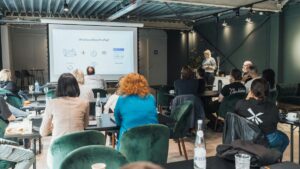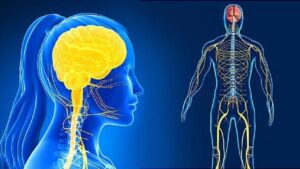At Touro College of Osteopathic Medicine (TouroCOM), the OMM I course isn’t just another subject—it’s the beginning of your identity as a Doctor of Osteopathic Medicine (DO).
While other first-year classes teach you how the body works, OMM I teaches you how to feel it, understand it, and treat it—by hand. It’s where osteopathic students begin learning the powerful philosophy and clinical techniques that set DOs apart from their MD peers.
What Is OMM I?
OMM I (Osteopathic Manipulative Medicine I) is the first course in a multi-semester series that trains students in:
- Palpatory anatomy
- Somatic dysfunction diagnosis
- Hands-on treatment techniques
- Osteopathic principles in patient care
Students spend time in lecture and lab developing the manual skills and clinical reasoning necessary to diagnose and treat using osteopathic manipulative techniques (OMT).
Why OMM I Is Essential at TouroCOM?
TouroCOM’s OMM I program is known for its structured approach, dedicated faculty, and clinical integration. Here’s why it stands out:
1. Palpation Skills From Day One
You’ll begin building your tactile awareness early—learning how to assess muscle tone, asymmetry, joint motion, and tenderness with precision. These are skills that most physicians don’t develop until much later.
2. Hands-On Lab Every Week
OMM I labs allow students to practice techniques in small groups, under the guidance of experienced DOs. Feedback is immediate, personalized, and designed to boost both confidence and competence.
3. Techniques You’ll Use for Life
From muscle energy to soft tissue manipulation and myofascial release, OMM I covers the core treatments you’ll rely on throughout your osteopathic career.
4. Clinical Relevance Early On
Techniques aren’t taught in isolation. You’ll learn how to apply OMT to real conditions like back pain, postural problems, and respiratory dysfunction—all integrated with what you’re learning in anatomy and physiology.
Topics & Techniques Covered in OMM I
| Core Areas | Examples |
|---|---|
| Osteopathic Philosophy | Tenets of osteopathy, mind-body connection |
| Somatic Dysfunction | TART: Tissue texture, Asymmetry, etc. |
| Palpation & Landmarks | Spine, ribs, pelvis, extremities |
| OMT Techniques | Soft tissue, muscle energy, counterstrain |
| Anatomy Integration | Using bony landmarks and fascia connections |
| Diagnostic Screening | Layer-by-layer palpation, positional diagnosis |
What Students Are Saying at TouroCOM
Many students enter OMM I unsure of their manual skills—but by mid-semester, they’re confidently palpating, diagnosing, and performing treatments. Most agree: OMM I helps them feel like doctors early in their training.
It also builds:
- Stronger anatomical understanding
- Better clinical empathy
- A unique, hands-on advantage for rotations and residency
And for those pursuing OMM-heavy specialties like family medicine, sports medicine, and physical rehab, OMM I is the essential first step.
How to Succeed in OMM I?
Here are proven strategies from upperclassmen at SGA Middletown:
- Practice outside of lab — Palpate friends, roommates, or even pillows. Muscle memory is key.
- Record your technique — Use video to review hand placement and motion.
- Use visuals & flashcards — The Nicholas & Nicholas OMT Atlas is a favorite.
- Ask for feedback often — Faculty are eager to help refine your skill early.
- Review anatomy constantly — It directly impacts your palpation and technique accuracy.
Conclusion
Osteopathic Manipulative Medicine is more than a technique—it’s a mindset. And OMM I is your foundation.
At TouroCOM, students don’t just learn about healing—they learn to use their hands to support the body’s ability to heal itself. With focused practice, strong mentorship, and a belief in treating the whole patient, OMM I becomes one of the most transformational courses of the first year.
Start strong. Feel the difference. Think like a DO.
FAQs
Is OMM I difficult for students without prior manual experience?
Not at all. OMM I is designed for beginners and builds skills gradually through hands-on practice, repetition, and mentoring.
How is OMM I graded?
It typically includes practical exams, written quizzes, and participation in lab sessions. Mastery of technique and clinical reasoning are both evaluated.
Do OMM I techniques help with real patient conditions?
Yes. Many students see the effectiveness of OMT in cases of low back pain, rib dysfunctions, respiratory conditions, and postural issues.
Will OMM help with board exams like COMLEX?
Absolutely. OMT is a key component of the COMLEX Level 1 and Level 2 exams—and OMM I lays the foundation for that success.




